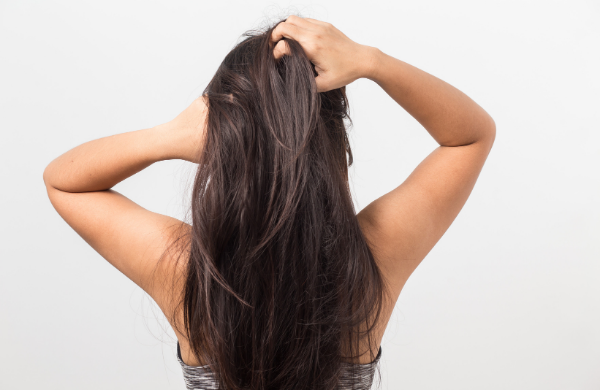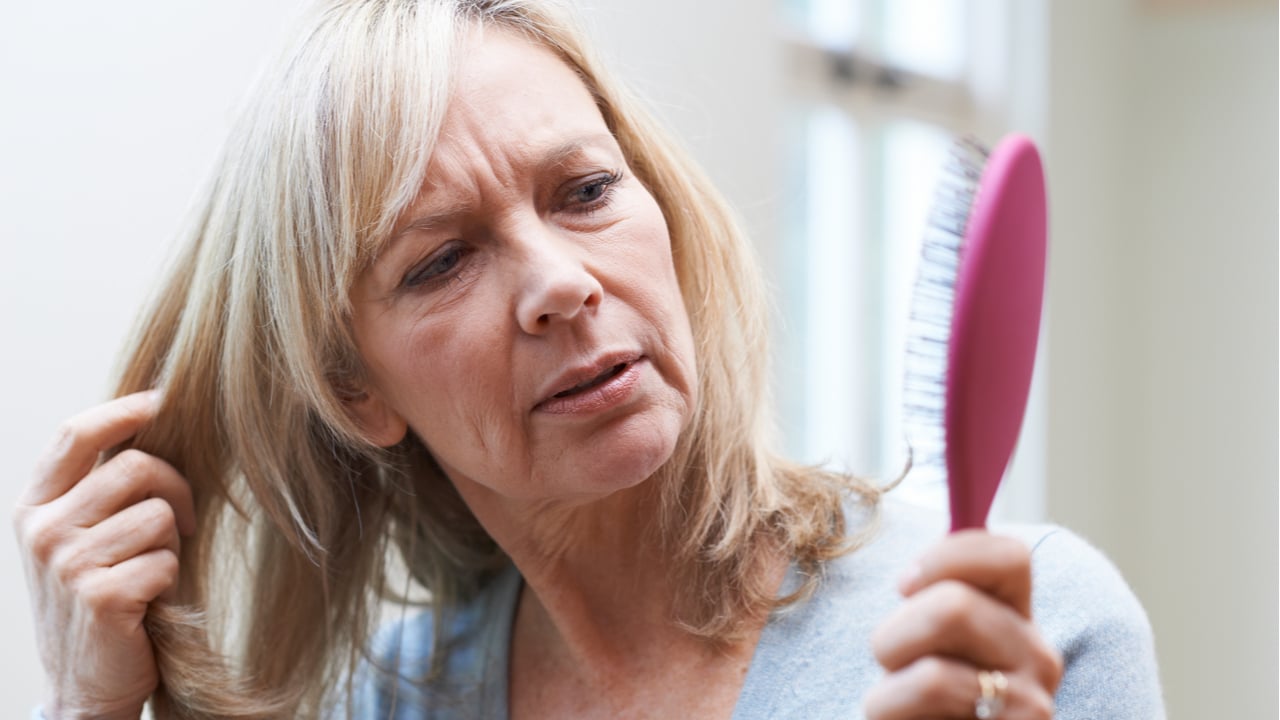Hair loss in women is an uncomfortable experience. No one wants to feel clumps of hair slide off their mane, or style their hair only to try and cover up bald spots. It’s not fun, and can have a negative impact on self-esteem. The silver lining is that female hair loss isn’t uncommon, so there are a few proven, and well researched, remedies to try if you are experiencing hair loss.
So, what causes hair loss in women? The reason you may be experiencing hair loss can vary, and the remedy that works for you may be different than what worked for your sister, or best friend, or hairdresser. Today’s blog will cover everything from what causes hair loss in women, to how to recover from female hair loss. Plus, of course, some tested solutions to help prevent and reverse hair loss.
What Causes Hair Loss In Women?
With any symptom that arises in the body, including female hair loss, it’s best to get to the root cause of the issue. (No pun intended). What can be daunting about trying to pinpoint what causes hair loss in women, is that there are so many different possible causes. One of the most common culprits is stress. There is good stress, like exercise, and bad stress, think chronic stress. When we overload the body with too much of the harmful stress, we induce inflammation in the body. This inflammation causes our hair to weaken, and potentially fall out. There are also cases where people are so stressed that they unconsciously begin to pull out their own hair. [1]
Another common cause of hair loss in women is yo-yo and restrictive dieting. When we don’t consume enough calories, or we restrict the type of food we eat, we miss out on vital vitamins and minerals. Think of our body as a plant. If we don’t water (nourish) it properly, it will begin to wilt and lose leaves. Our hair is the same. If it doesn’t receive the right amount of nutrients, it will become frail and likely fall out. Side effects of a low mineral diet can be poor circulation and blood deficiencies, both of which can also contribute to hair loss. [2]
Natural female transitional periods, like childbirth and menopause, are also times when women are likely to experience hair loss. With hormones and stress levels high, the body focuses on what it’s being signaled is a major priority, and not so much on collagen production and hair growth. [3]
Hair styling can also contribute to hair loss. From overheating, wearing too-tight styles, and even over-washing, hair loss is likely to follow. We want to nurture our hair and treat it like we do our body–with care. Using a heat protectant before styling, allowing our hair to breathe by wearing it down, and allowing a day or two to go by between washes can all help reduce hair loss from over styling. [4]
Lastly, certain medications can lead to hair loss. This is a topic to discuss directly with your healthcare provider, however it may be worth mentioning if you’re concerned about medication related hair loss. You never want to alter or stop your meditation without guidance, but if extreme hair loss is an issue after starting a new medication, it is entirely okay to consult your doctor for alternative options. [5]
Causes of female hair loss
Some of the most common causes of female hair loss include, but are not limited to:
- Stress
- Restrictive diets
- Poor circulation
- Over-styling
- Childbirth
- Blood deficiencies
- Menopause
- Certain medications
Is Hair Loss In Women Common?
Hair loss in women is extremely common. Women go through many changes in their life, like menstruating, giving birth, and experiencing menopause, that can all contribute to hair loss. Women also tend to lean toward more restrictive lifestyles than men, inducing stress and reducing vitamin and mineral intake. In my opinion, though, women have a silver lining when it comes to experiencing female hair loss. Women are much more likely to seek treatment for hair loss. Men can simply become “a hat guy” or rock a bald head. Women tend to be more self-conscious about hair loss, and are quicker to seek solutions. If you are experiencing hair loss, know that you’re absolutely not alone and that there are ways to grow your gorgeous locks back!
How To Treat Female Hair Loss
If you do experience hair loss, don’t worry. It’s not only normal, but preventable. There are a few amazing treatments that can help reduce female hair loss, and even help prevent it altogether.
I suggest you start with one treatment you can commit to, and then start to incorporate the other suggestions over time. The more support you have, the better your hair growth, and hair loss prevention, will be!
- Red light therapy–Red light is a type of light that penetrates the dermis layer of the skin. The wavelengths of red light can help stimulate collagen production, helping to encourage hair growth and strengthen existing follicles. It’s a pricier option, but worth it if you’ve experienced extreme hair loss. [6]
- Collagen supplement–Super Youth collagen is an amazing supplement to take if you suffer from hair loss. It’s made with five types of collagen, which is the type of protein that contributes to healthier, stronger hair. There are studies showing that it can also contribute to hair growth. [7, 8, 9]
- Colorful diet–As mentioned previously, lack of color and variety in your diet can drastically reduce the amount of phytonutrients your body receives. If you’re malnourished, your body’s first priority isn’t your hair. To give your body the fuel it needs to tend to your entire body, including hair growth, add some more variety to your diet! For example, if you consistently buy broccoli and avocados at the grocery, opt for a yellow vegetable like bell peppers, or blue fruit like blueberries. The more colors you eat, the more vitamins and minerals you’re getting! [10]
- Improved hair care–If you style your hair everyday, it may be time for some changes. Make sure that you’re using heat protectant before heat styling, and let your hair dry naturally every once in a while to avoid overheating your scalp. This can help improve your hair follicles, and reduce hair loss. [4]

